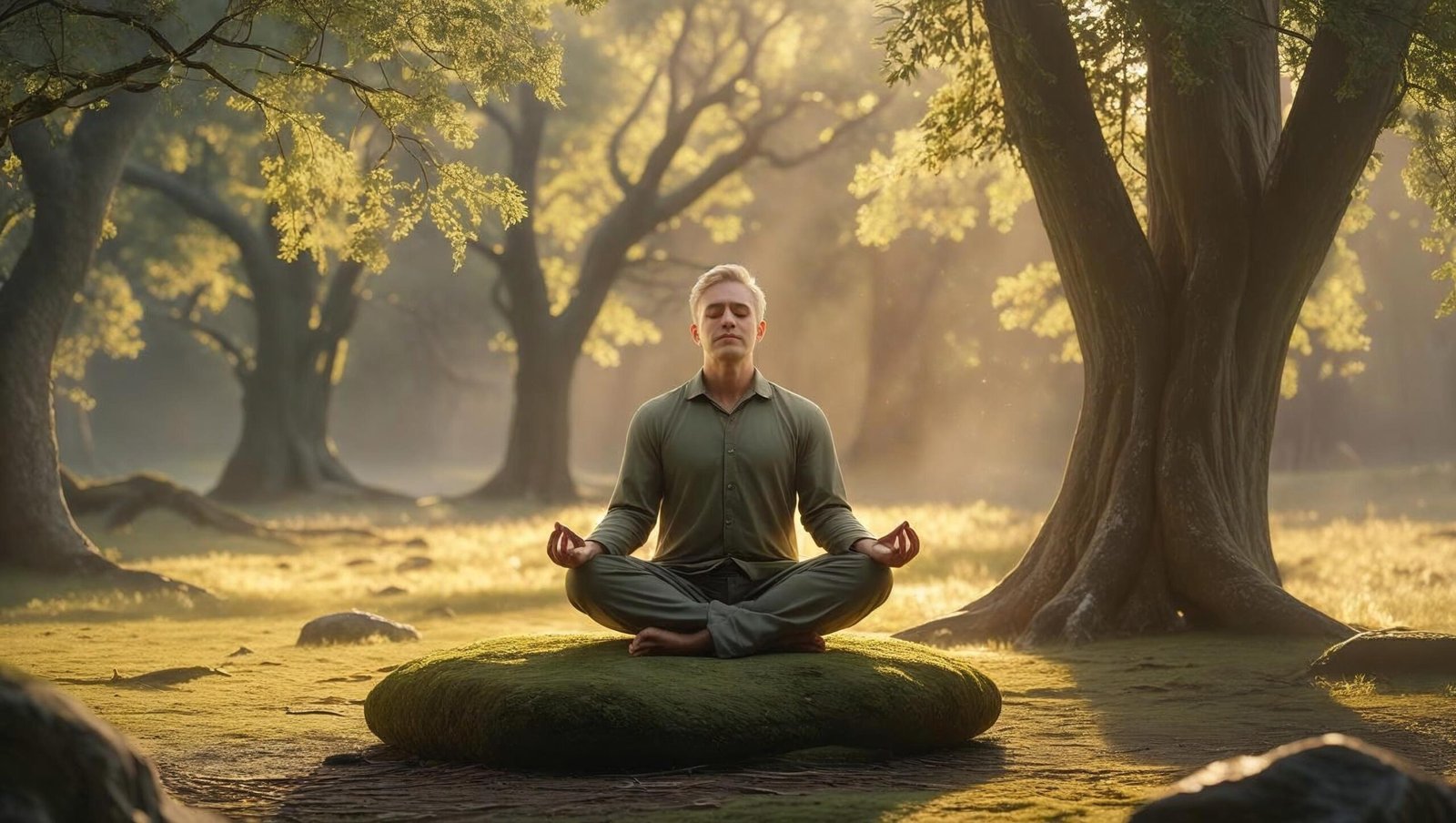Introduction
In our fast-paced world, where people seek fleeting joys in material possessions, The Art of Happiness emerges as a timeless guide that illuminates the path to genuine contentment. Authored by His Holiness the Dalai Lama and psychiatrist Dr. Howard C. Cutler, this book seamlessly integrates the spiritual wisdom of Tibetan Buddhism with modern psychiatric thought. As one delves into its pages, one uncovers a dialogue between two minds from vastly different backgrounds, unified in their quest to answer a singular question: What truly makes us happy?
This detailed blog post explores The Art of Happiness book review across multiple dimensions: the book’s philosophical core, psychological underpinnings, transformative life lessons, practical applications, and reflections on how it shapes the reader’s outlook on life.
Let us embark on a contemplative journey through the principles and lessons that make The Art of Happiness a perennial favorite among those yearning for peace and purpose.

Overview of the Book
The Art of Happiness is not a traditional self-help book. It is structured as a series of conversations between HH Dalai Lama and Dr. Howard Cutler. The narrative weaves through interviews, real-life anecdotes, meditative teachings, and philosophical reflections. The central premise is disarmingly simple: the purpose of life is to seek happiness. However, the route to achieving this is nuanced, requiring effort, self-awareness, and compassion.
The book is divided into sections that address different aspects of happiness—its meaning, its causes, the barriers that inhibit it, and the mental training needed to sustain it. Readers gain insights into how one’s state of mind significantly influences emotional well-being more than external circumstances.
Cutler supplements the Dalai Lama’s spiritual insights with psychological analysis, thereby reinforcing each point with empirical and therapeutic validity. The result is a holistic guide that resonates with individuals from all walks of life.
The Voices Behind the Book
His Holiness the 14th Dalai Lama
The spiritual leader of Tibetan Buddhism, HH Dalai Lama is globally admired for his teachings on compassion, non-violence, and inner peace. In this book, he offers deeply personal philosophies with simplicity and clarity. His message is rooted in centuries-old Buddhist traditions yet remains universally applicable.
Dr. Howard C. Cutler
A respected psychiatrist, Cutler brings a clinical and Western lens to the book. His probing questions help deconstruct complex spiritual ideas and ground them in scientific understanding. His presence ensures that the wisdom shared by the Dalai Lama is not seen as esoteric but practical and actionable.
Together, they create a synergy that makes the book both intellectually rich and spiritually uplifting.
Key Concepts & Psychological Insights
The book challenges readers to reconsider the nature of happiness. Rather than seeing it as an outcome of wealth or status, it positions happiness as a skill—one that requires cultivation. The Dalai Lama speaks often about ‘mental discipline’—the conscious act of reshaping one’s thoughts, emotions, and perspectives to create a happier existence.
Dr. Cutler affirms these ideas through cognitive-behavioral principles. Thoughts shape emotions; thus, by modifying our thought patterns, we can transform our emotional lives. Meditation, gratitude, kindness, and self-reflection become vital tools in this endeavor.
The authors assert that suffering is inevitable but manageable. By accepting pain as part of the human experience and focusing on others’ well-being, individuals can transcend even profound adversity.
7 Profound Lessons from The Art of Happiness
Lesson 1: Happiness is Trainable
Just as physical fitness requires regular exercise, happiness requires mental training. Meditation and self-reflection are not luxuries but necessities for emotional health.
Lesson 2: Compassion is Central to Joy
True happiness arises from serving others. Compassion expands our emotional capacity and brings us closer to our shared humanity.
Lesson 3: Perspective is Power
Events do not determine our happiness—our interpretation does. Reframing challenges as opportunities is a powerful cognitive skill.
Lesson 4: Inner Peace Over External Success
A luxurious life without inner calm is hollow. Cultivating serenity through mindfulness leads to authentic fulfillment.
Lesson 5: Embrace Suffering to Overcome It
Instead of resisting pain, acknowledge it. Suffering is part of the human condition and can be a teacher rather than a tormentor.
Lesson 6: Live Intentionally
Conscious living—being aware of our actions, motives, and desires—fosters ethical behavior and inner harmony.
Lesson 7: Make Compassion a Daily Practice
Small daily acts of kindness accumulate into a compassionate life. This is not merely altruistic; it nourishes the soul.
Practical Applications for Modern Life
- Mindfulness Routines – Start your day with 10 minutes of quiet breathing to anchor your awareness.
- Gratitude Journaling – List three things daily that bring you joy or peace.
- Compassion Challenges – Perform one selfless act each day, without expecting reciprocation.
- Cognitive Reframing – When something negative occurs, pause and ask, “What can this teach me?”
- Digital Detoxing – Reduce time on devices to reconnect with your inner self.
These strategies align seamlessly with the teachings in The Art of Happiness book review and foster emotional well-being in daily life.

How The Art of Happiness Aligns with Modern Psychology
In contemporary psychology, much attention is paid to positive psychology—a branch that focuses on strengths, virtues, and factors that contribute to human flourishing. The Art of Happiness echoes many tenets of positive psychology. Concepts like gratitude, resilience, and self-compassion are central to both. The Dalai Lama’s emphasis on mental training aligns with cognitive-behavioral therapy’s assertion that one can change behavior by changing thought patterns.
The book’s practical emphasis on transforming emotions and creating lasting habits parallels modern coaching strategies used in therapy and personal development. The combination of scientific language and spiritual guidance creates a synergistic effect, making the content both credible and inspiring.
Real-Life Stories Inspired by The Art of Happiness
Many readers around the globe have found that The Art of Happiness has had a profound impact on their lives. Stories abound of people overcoming anxiety, depression, loneliness, and burnout through the practices advised in this book. From working professionals in bustling cities to retirees rediscovering their sense of purpose, the principles from The Art of Happiness transcend demographic boundaries.
Take, for example, the case of a teacher in Mumbai who was on the verge of quitting her job due to stress and emotional exhaustion. After reading The Art of Happiness, she began incorporating morning meditation, gratitude exercises, and acts of kindness in her day. Within a month, she reported renewed energy, deeper connections with her students, and a sense of fulfillment she hadn’t experienced in years.
The Art of Happiness in Educational and Professional Settings
In recent years, institutions and workplaces have begun to recognize the relevance of emotional intelligence and mental well-being. The Art of Happiness serves as an excellent resource for corporate leaders, educators, counselors, and HR professionals seeking to build more compassionate and emotionally intelligent cultures.
Workshops based on The Art of Happiness have been conducted in universities and corporate offices, helping participants reframe stress, understand the value of empathy, and foster meaningful relationships. By encouraging a culture of mindfulness and compassion, organizations can not only improve mental well-being but also boost productivity, creativity, and overall satisfaction.
Bridging Cultural Perspectives through The Art of Happiness
One of the most profound elements of The Art of Happiness is how it bridges Eastern spirituality with Western psychology. For Western audiences unfamiliar with Buddhist teachings, the book acts as an invitation into a world where introspection and service are considered essential to living a fulfilling life. For Eastern readers, the blend of scientific reasoning provides a modern validation of ancient wisdom.
This cultural synthesis has made The Art of Happiness a global phenomenon. It invites readers from all backgrounds to recognize the shared human pursuit of joy, peace, and connection.
The Art of Happiness as a Lifelong Companion
The Art of Happiness is not a book that is read once and forgotten. It is a resource to be revisited time and again. As readers grow older and experience different life phases—parenthood, career shifts, grief, or retirement—the lessons in the book take on new meanings. What once seemed theoretical can suddenly feel deeply personal.
The teachings of The Art of Happiness act like a mirror, constantly reflecting our inner state. It challenges us to confront our emotional habits and encourages ongoing self-inquiry. The value lies not just in reading the book, but in living its philosophy daily. Happiness, as it reveals, is not an endpoint but a practice—one that evolves with time.
Parents can use its principles to foster kindness in children. Students can find purpose and calm amid academic pressure. Elders can derive peace in their reflections. It is this universal relevance that keeps the book alive in the hearts of millions.

Community, Connection, and The Art of Happiness
One of the central themes in The Art of Happiness is the value of community. In today’s hyper-individualistic society, people often suffer silently in isolation. The Dalai Lama stresses that connection—with others, with nature, with self—is integral to a fulfilling life. Practicing kindness, engaging in community service, and simply being present in our relationships are vital for cultivating happiness.
Virtual reading clubs, social media groups, and mindfulness circles have formed around the book, offering spaces where individuals can share experiences, discuss lessons, and support one another. These initiatives echo the book’s core message: that happiness multiplies when shared.
Final Thoughts
The Art of Happiness is more than a book—it is a compass pointing toward a more meaningful and harmonious existence. By exploring its lessons, practicing its exercises, and living its philosophy, anyone can experience a transformation in how they relate to themselves and others.
Whether you are seeking personal clarity, emotional resilience, or simply a life of more joy, The Art of Happiness offers an accessible yet profound path forward. In a world that often feels chaotic and overwhelming, its timeless message stands as a beacon of inner peace.
To discover more enlightening book reviews, life philosophies, and reflections, visit shubhanshuinsights.com and begin your own journey into self-awareness and sustained happiness.
Critical Analysis
The Art of Happiness offers a compelling merger of spirituality and science. It is eloquent yet accessible, deep yet grounded. However, certain sections may appear repetitive due to the conversational format. While the universality of its themes is its strength, some culturally specific ideas might require contextual understanding for Western readers.
Still, the book triumphs in delivering a cohesive message: happiness is not accidental—it is intentional. And therein lies its enduring relevance.
Personal Reflections
Reading The Art of Happiness was more than an intellectual exercise—it was a transformation. The teachings did not merely inform but awakened. Concepts like compassion, mindfulness, and intentional living reshaped my daily practices. The focus keyword, The Art of Happiness book review, barely encapsulates the depth this book provides.
One begins to see that the real art lies not in seeking happiness outside, but in nurturing it within.
Expanding the Horizon of The Art of Happiness
As global societies wrestle with mental health crises, stress epidemics, and a sense of purposelessness, The Art of Happiness continues to offer light. Its message is not confined to a religious or psychological boundary; it resonates across spiritual seekers, psychological practitioners, educators, and everyday readers who simply want to lead better lives.
Furthermore, The Art of Happiness invites critical thought and introspection. Readers are encouraged not to accept its teachings blindly, but to reflect on them, apply them in their context, and adapt the practices in ways that suit their personal journeys. This interactive nature elevates the reading experience into a transformative one.
With rising awareness about the importance of emotional resilience and mindful living, this book stands as a cornerstone text in the evolving dialogue on mental well-being. Its compassionate tone and practical wisdom give people hope—not just to survive, but to thrive.

The Role of Meditation in The Art of Happiness
Meditation is a cornerstone of The Art of Happiness. The Dalai Lama highlights meditation as a powerful tool for calming the mind and increasing self-awareness. Regular meditation practice helps individuals detach from negative thoughts and cultivate a peaceful mental state. This inner calm is essential for sustaining happiness. The book offers practical guidance on how meditation can become a daily habit that nurtures emotional balance and clarity.
Compassion’s Ripple Effect
The Art of Happiness teaches that compassion is not only beneficial for others but transformative for oneself. Acts of kindness create a ripple effect that enhances relationships and fosters community. Compassion strengthens emotional bonds and reduces feelings of isolation. By integrating compassion into daily life, readers learn that happiness expands naturally when we focus on the welfare of others, a core teaching emphasized throughout The Art of Happiness.
Overcoming Obstacles to Happiness
The journey to happiness is often hindered by common obstacles such as fear, anger, and attachment. The Art of Happiness explores these barriers in depth, providing strategies to overcome them. The Dalai Lama and Dr. Cutler advise cultivating patience and understanding as antidotes. Through mental training and self-reflection, readers are empowered to navigate challenges with resilience, keeping happiness within reach despite external difficulties.
Lifelong Learning from The Art of Happiness
The Art of Happiness encourages viewing happiness as a lifelong learning process rather than a fixed state. Each life phase brings new challenges and opportunities for growth. The book’s teachings serve as a guide for continuous self-improvement and emotional maturity. Readers are inspired to revisit the book’s lessons regularly, deepening their understanding and refining their practice of happiness in response to life’s evolving circumstances.

FAQs
1. What is The Art of Happiness about? A dialogue between HH Dalai Lama and Dr. Cutler on achieving lasting happiness through mental training and compassion.
2. Is this a religious book? No. Though rooted in Buddhist values, it offers secular wisdom suitable for all readers.
3. Can this book help with depression or anxiety? While not a medical manual, its principles are therapeutic and can complement professional treatment.
4. How long does it take to read? Approximately 6–8 hours. Ideal for slow, reflective reading.
5. Are there practical exercises included? Yes. The book suggests meditative practices and daily reflections.
Conclusion
The Art of Happiness is a blueprint for emotional mastery and spiritual growth. It teaches that while we cannot control all circumstances, we can always cultivate a peaceful mind. Through compassion, self-awareness, and mental discipline, happiness becomes not just possible—but inevitable.
Let this be your invitation to start that journey.
Read more such insightful reviews at shubhanshuinsights.com.
Comments Section
“This review captures the soul of the book. Thank you, Shubhanshu!”
“I needed this today—beautifully written and deeply resonant.”
“Now I understand why this book changed so many lives. Well explained.”
7 Profound Lessons from The Tipping Point by Malcolm Gladwell: A Complete Review2 Transform Your Life Positively with Change Your Brain Every Day by Dr. Daniel G. Amen1 Don’t Sweat the Small Stuff Book Review – Uplifting Lessons from Richard Carlson on Living a Stress-Free Life1 Why We Sleep Book Review – A Fascinating Deep Dive into the Science of Slumber by Matthew Walker” 1 Think and Grow Rich by Napoleon Hill – A Definitive Blueprint for Success”